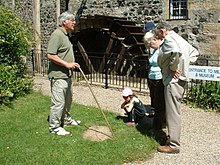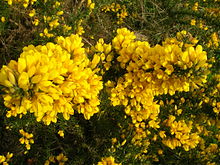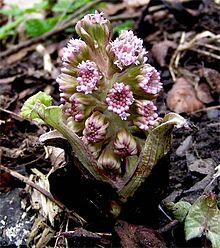Dalgarven Mill – Museum of Ayrshire Country Life and Costume
The village of Dalgarven was largely destroyed by the construction of the main A737 road, but the mill buildings survive and are open as a tourist attraction and educational resource, interpreting local history in addition to its role as a museum of Ayrshire country life.Very few mills remain in Ayrshire and this is an example which has been preserved due to the foresight of the family of the last miller who saw a modern role for an ancient industrial site and traditional social meeting-place.The River Garnock's waters power a 6-metre diameter breast-shot wheel that drives the French burr millstones through cast iron gearing.The weir on the River Garnock is made of boulders which are carefully placed and locked together creating a millpond that supplies a good head of water to the wheel through the lade.The weir was built on a natural dyke which runs across the Garnock at this point, its existence being carefully exploited by the monks of Kilwinning Abbey who chose the site for the mill.Window tax was first levied in England in 1696 to offset the expenses of making up the gold and silver deficiency in the re-coinage of William III reign caused by clipping and filing of coins.[2] Lying on the cobbles outside the original waulk mill and stables is a large oval sandstone object with metal attachments on its central axis.This was used to crush whin or gorse in a shallow trough, the stone being dragged up and down by a horse, making the spiny and tough branches of the plant suitable for use as animal feed.[3] Heron, on a tour of Scotland in 1799, records that the miller at Dalgarven had constructed a wooden bridge in the Japanese style and interesting gardens with patterns of low box hedges.The three-storey grain store has been converted during the main restoration period of 1985 to 1987, to house an extensive collection of Ayrshire farming and domestic memorabilia, reflecting the self-sufficiency of the pre-industrial rural community that was Dalgarven.An antique shop is housed in an old outbuilding, a cafe provides snacks and meals and the original mill on the River Garnock's edge is being developed.The first and second floors of the mill show all the aspects of country life with re-constructions of interiors (parlour, kitchen and bedroom) from Victorian times and displays of farm implements, Ayrshire Whitework, lace, luggage, dairy work, wildlife, storage jars, a bee skep and stand, quoits, early vacuum cleaners, washing machines, blacksmiths' tools, etc.School groups can visit the mill as part of their studies and are given guided tours and / or specific talks on the many topics which are covered by the trust's collections.A type of petroglyph called a cup and ring mark stone is recorded as existing at Dalgarven by John Smith,[8] the notable Ayrshire antiquarian.It is not generally appreciated how much the Ayrshire landscape has changed its character over the last few hundred years, for even in the 1760-70 Statistical Account it is stated that "there was no such thing to be seen as trees or hedges in the parish; all was naked and open".The popular pastime of geocaching is represented on the nature walk by a hidden cache which contains a log book for visitors' comments and a 'take something and leave something choice'.















KilwinningNorth AyrshirewatermillDalgarvenA737 roadantique shopNational TrustMuseum of ScotlandKilwinning AbbeyRettingRiver GarnockLoudounGalston, East AyrshireCunninghamheadRiver Annickwindow taxre-coinage of William III reignThirlageOS mapLambroughton LochLambroughtonploughingthreshingharvestingsmithyOwl HoleCostumeCostume coordinationUse of costume in Athenian tragedyWardrobe supervisorFursuitCosplayCostume partyMasqueMasquerade ballParadeWorld Costume FestivalCostume designCostume designerSpirit gumBody paintingDisguiseFake moustacheFatsuitIllusion costumeInflatable costumeRubber maskZentaiHalloween costumeSanta suitCostumed performerCreature suitDance costumeDead-character costumeDomino maskGorilla suitKumadoriLeotardPantomime horseStage dressTitan the RobotPlague doctor costumeModern dressSesame StreetZoobilee ZooBatsuitutility beltGhostfaceGirdle of GaeaMonokumaAngels CostumesCostume Designers GuildWestern CostumeLaurence OlivierAcademy AwardAfrica Movie AcademyCritics' ChoiceCésarDavid di DonatelloFilmfareGolden ArenaNational Film AwardRobertSatellite Costume Designers Guild (TV)Costume Designers Guild (fantasy)Centre National du Costume de SceneCostume Museum of CanadaKastoria Costume MuseumDevonshire Collection of Period CostumeKorea Museum of Modern CostumeMuseum of the History of the Greek CostumePortugal National Museum of Costume and FashionScotland National Museum of Costumebee skepquoitsvacuum cleanerswashing machinesblacksmithscast-ironmilestonepetroglyphcup and ring markNeolithicBronze AgeFossillimestonetree fernkingfisherConopodium majusHemlock water dropwortPetasites hybridusHimalayan balsamGiant hogweedClaytonia sibiricaStewartonTaphrina padiCoppicinghornbeamWater BetonySustransClyde Muirshiel Regional ParkJohnstoneGlasgowCleeves Cove cavegeocaching